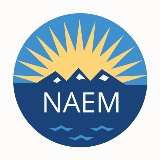Evolving Your Metrics to Advance EHS Performance

At NAEM's upcoming Forum on Oct. 22-24 in Austin, Michelle Redfield, Director of Safety, Environment & Process Improvement with Schneider Electric, will be leading a benchmarking discussion on the topic with fellow EHS & Sustainability leaders. We got a preview of the conversation when we spoke with her earlier this week.
Green Tie (GT): What are some of the common challenges that companies face in setting metrics?
Michelle Redfield (MR): One of those challenges is 'How do we continue to set up metrics when we're already in a mature EHS organization and we've already achieved significant reductions?' If you reduce, reduce, reduce, you start to get down to that asymptote, where it's really hard to drive change between .0001 and 0. This is something we've encountered at Schneider Electric, especially on the energy side. We have had an energy action program in place for about 12 years, so we've already gotten all of the low-hanging fruit. We're not yet at zero so we want to keep getting closer, but what are those metrics that we can set to try to drive further reductions? And then there's also a thing happening in industry right now where we're seeing a lot of the more senior, experienced personnel who are leaving our EHS organizations - so then there's really a concern about backsliding. Another area that seems to rise to the surface is how do you set goals that drive site-specific behaviors versus a goal that says: 'You need to reduce by X percent'? What are the metrics to drive those behaviors? Because just having those metrics there doesn't help anybody understand what they're supposed to do. So you've got to figure out how do you drive the behavior that then drives the outcome?
GT: What are some of those leadership behaviors that affect EHS performance?
MR: Those behaviors may be things such as leaders' involvement with audits and assessments, number of floor walks and participation of leaders in environmental activities. Are your leaders going to the global environment day celebrations? Are your leaders participating in incident investigations? What is their actual participation in EHS activities? We do look at that. We also expect our leaders to have at least monthly or weekly safety updates across their organization.
GT: How are companies driving accountability for the outcomes within their organizations?
MR: For Schneider, it's generally accepted that our operational managers or our manufacturing leads have safety and environment goals in their metrics. Also, tracking and reporting of EHS goals is conducted jointly by both the manufacturing and the EHS organizations. The EHS metrics are tracked together with the manufacturing metrics on the monthly business scorecards reviewed at the Senior VP level. The plant managers are reporting up weekly and monthly and the business unit leaders are reporting up. At the same time, the EHS team monitors and helps consolidate the safety and environmental data. That's an approach. For instance, let's say we have five safety improvement programs we want to do in 2014. Instead of those coming out of the safety team, they come straight out of the manufacturing leaders and the business unit leaders. I don't know if it's necessarily setting different goals, but it's changing who's tracking and managing them and being held accountable for them.
GT: How has the metrics landscape changed over time?
MR: My assessment is that it's becoming more complex. It's not necessarily an either leading indicators or lagging indicators question anymore. I think we'll always need to have both. It's not necessarily that they're moving in one direction, but that they're getting more broad and more complex. And that increases the data management, the reporting and all that.
GT: Could you give me an example of the nuance you're describing?
MR: For our safety program, for example, we carefully track the frequency of our injuries and the severity. So we've got two different metrics: one incident rate, which is a general indicator of frequency. The other is lost days as a general indicator of severity. Although we're focusing really, really hard on these lost days, what we don't want to lose sight of why it is that we're tracking it. Is this really a severe injury because the surgery in Mexico was delayed for six months? Should we be tracking all of those six months as lost days? Is that really indicative? You have to continue to balance those things. Sometimes they just need to be flexible, which is really hard to do when you're in a global, multi-faceted, diverse organization. The countervailing issue is that your metrics have to be auditable and auditors don't like having things gray and left up to interpretation. But really, if we're trying to do our job and appropriately measure the severity of our incidents, we need to make exceptions here and there.
Topics:
Metrics & Reporting
Related
About the Author

NAEM Staff
The National Association for Environmental, Health and Safety, and Sustainability (EHS&S) Management (NAEM) empowers corporate leaders to advance environmental stewardship, create safe and healthy workplaces and promote global sustainability. As the
leading business community for EHS&S decision-makers, we provide engaging forums, a curated network, peer benchmarking, research insights and tools for solving today’s corporate EHS&S management challenges. Visit us online at naem.org.

